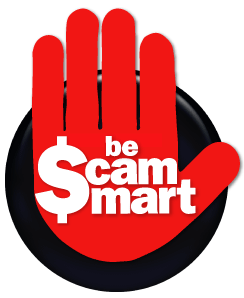]]>
Have you ever received e-mail messages that threaten to close your PayPal or Ebay account unless you send them information? It’s a scam called “phishing.” It is pronounced “fishing.” It means what it says. Internet scam artists are fishing for information. It comes from Internet fraudsters who send spam or pop-up messages to lure personal information from you. Their objective is to extract sensitive information from unsuspecting victims.
The Federal Trade Commission(FTC) warns you that when phishers send you a fraudulent e-email, they want you to update, validate,or confirm your bank, credit card, or PayPal account, including passwords. Some phishing e-mails threaten to terminate your account if you don’t respond. The messages direct you to a website that looks just like a legitimate organization’s site. However, it isn’t. It’s a bogus site whose sole purpose is to trick you into divulging your personal information so the operators can steal your identity and run up bills or commit crimes in your name.
The FTC suggests these tips to help you avoid getting hooked by a phishing scam:
If you get an e-mail message that asks for your personal or financial information, DO NOT REPLY. Do not click on the link in the message. Legitimate companies don’t ask for this information via e-mail. If you are concerned about your account, contact your bank or credit card company using a telephone number you know that is genuine.
All the scam merchant needs is for you to access his/her website. Then, you are hooked. To avoid an inadvertent mistake, stay off the internet until you have established contact with your financial institution.
Use anti-virus software and a firewall. Keep them up to date. Some phishing e-mails contain software that can harm your computer or track your activities on the Internet without your knowledge.
Anti-virus software and a firewall can protect you from inadvertently accepting such unwanted files. Anti-virus software scans incoming communications for troublesome files. Look for anti-virus software that recognizes current viruses as well as older ones that can effectively reverse the damage and that updates your files automatically.
A firewall helps make you invisible on the Internet. It blocks all communications from unauthorized sources. It is especially important to use a firewall if you have a broadband connection. Operating systems like Windows also may offer free software updates to close holes in the system that hackers or phishers could exploit.
Don’t e-mail personal or financial information. E-mail is not a secure method of transmitting personal information. If you initiate a transaction and need to provide such information, look for indicators that the destination site is secure. Unfortunately, no indicator is foolproof. Some phishers have forged security icons.
Review credit card and bank account statements as soon as you receive them. Check for unauthorized charges,address changes,and unexplained account balances.
Be cautious about opening any attachment or downloading any files from emails you receive, regardless of who sent them. These files can contain viruses or other software that can weaken your computer’s security.
After you are back on the internet, forward spam e-mail that is phishing for information to spam@uce.gov. Also, forward the suspicious e-mail to the company, bank, or organization impersonated in the phishing e-mail. Most organizations have information on their websites about where to report problems.
If you believe you’ve been scammed, file your complaint to ftc.gov, and then visit the FTC’s Identity Theft website at www.consumer.gov/idtheft. Victims of phishing can become victims of identity theft. While you can’t entirely control whether you will become a victim of identity theft, you can take some steps to minimize your risk. If an identity thief is opening credit accounts in your name, these new accounts are likely to show up on your credit report. You may catch an incident early if you order a free copy of your credit report periodically from any of the three major credit bureaus.
You can learn other ways to avoid email scams and deal with deceptive spam at ftc.gov/spam







